How to Handle Cat Aggression with Training

Aggression in cats is a common problem and can be very stressful for any pet owner.
Cats are generally known for their independence, but aggressive behavior is often misconstrued.
Whether your cat is lashing out during playtime or acting defensively around new people or pets, understanding the reasons behind their aggression is key to addressing the issue.
This article will cover techniques and strategies that can help manage and reduce cat aggression, allowing you to live peacefully with your feline friend.
The first step in handling cat aggression is to understand its root cause.
By identifying the source of this behavior, you can develop a training approach that reduces the stress contributing to your cat’s aggressive outbursts.
Cat aggression is often triggered by fear, territorial instincts, or a lack of proper socialization.
With the right training, most aggressive behaviors in cats can be effectively managed.
Table of Contents
Understanding Cat Aggression: Causes and Triggers
The first step in effectively handling cat aggression is understanding its causes.
Often, when your cat seems to act aggressively out of nowhere, there are deeper issues causing this behavior.
Aggression can be due to environmental stress or even past traumas, both of which need to be addressed.
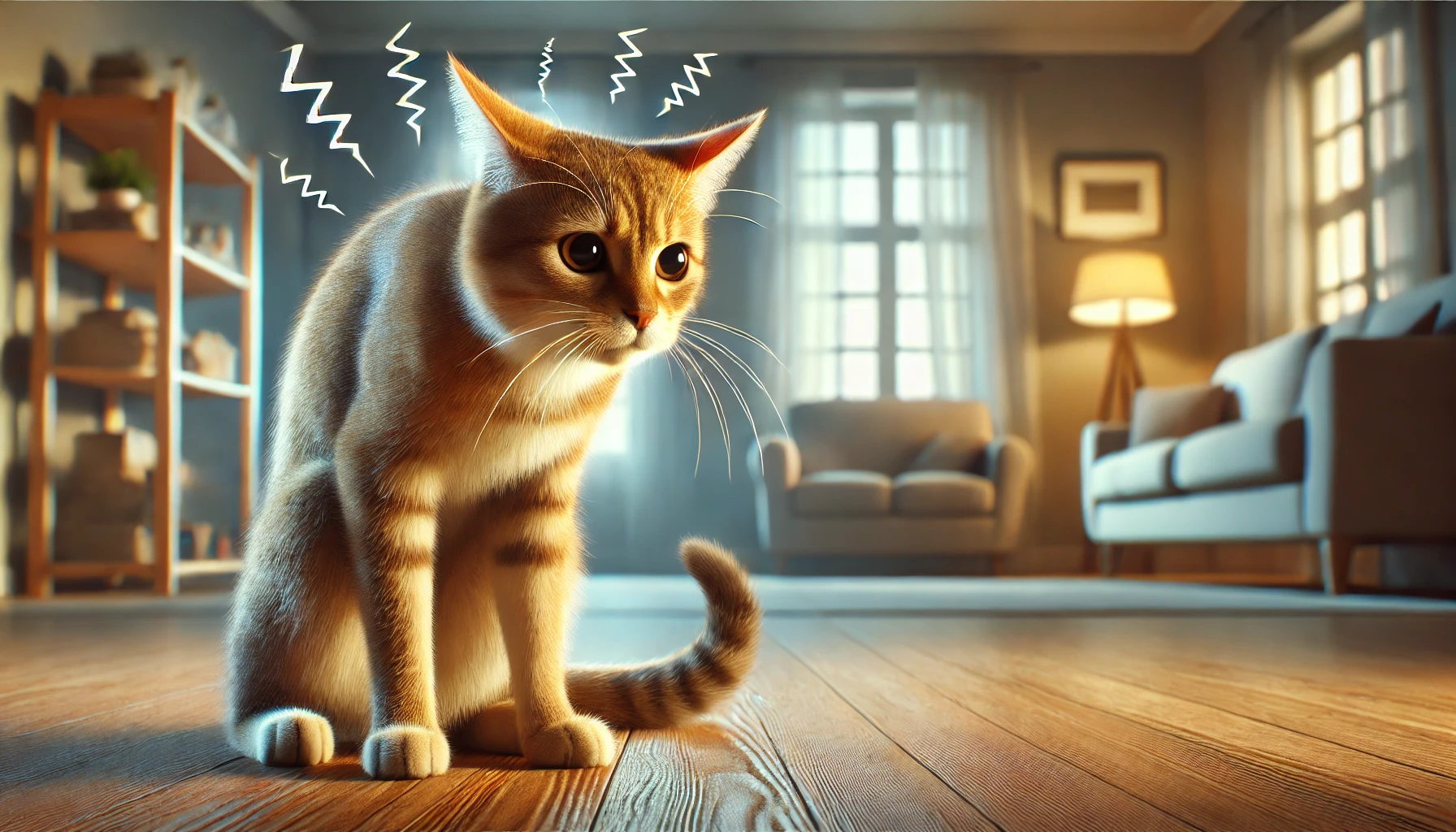
Common Causes of Cat Aggression
- Fear or Anxiety: A cat that feels threatened or scared may respond with aggression as a self-defense mechanism.
- Territorial Behavior: Cats have a strong territorial instinct and may react aggressively if they feel their space is being invaded by another animal or person.
- Redirected Aggression: This occurs when a cat is frustrated by something they cannot reach, such as another cat seen through a window, and lashes out at a nearby person or pet.
- Poor Socialization: Cats that haven’t been properly socialized between two and fourteen weeks of age are more likely to develop aggressive behaviors.
- Medical Issues or Pain: Cats experiencing pain or medical problems may act aggressively to protect themselves from further discomfort.
Understanding these common causes is the first step in managing cat aggression and reducing the triggers that provoke such behavior.
Understanding the root causes of aggression is key to effectively managing your cat’s behavior. Early identification can help prevent escalation.
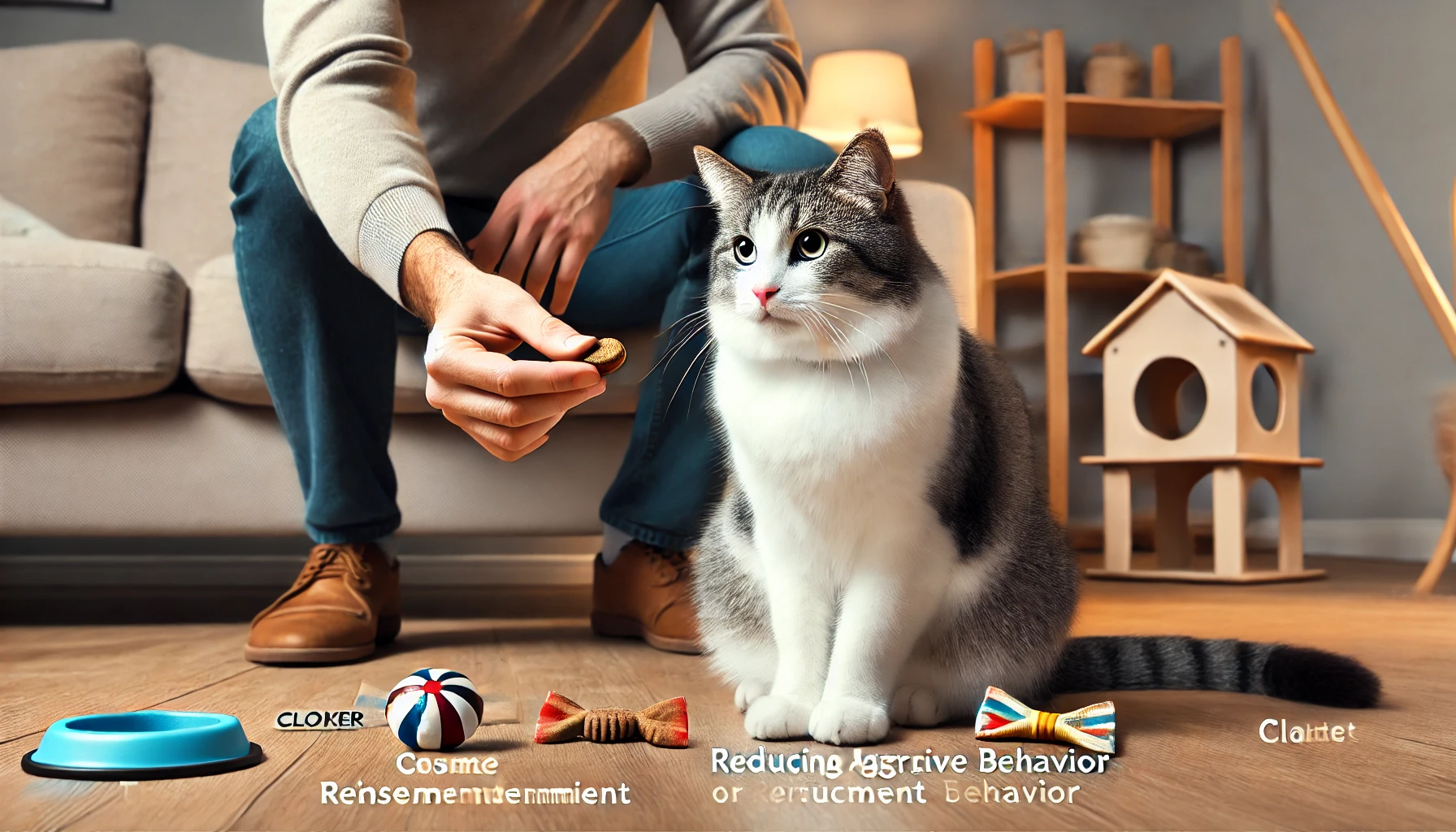
Training Techniques for the Reduction of Aggressive Behavior
When dealing with cat aggression, training can make a significant difference in altering undesired behaviors.
Cats are intelligent, and while they may not be trained in the same way as dogs, consistency, patience, and trust can lead to lasting results.
By using positive reinforcement, distraction, and reducing stressors, you can effectively manage cat aggression.
Remember that training is a process, not an event, and it requires time, effort, and consistency for long-term success.
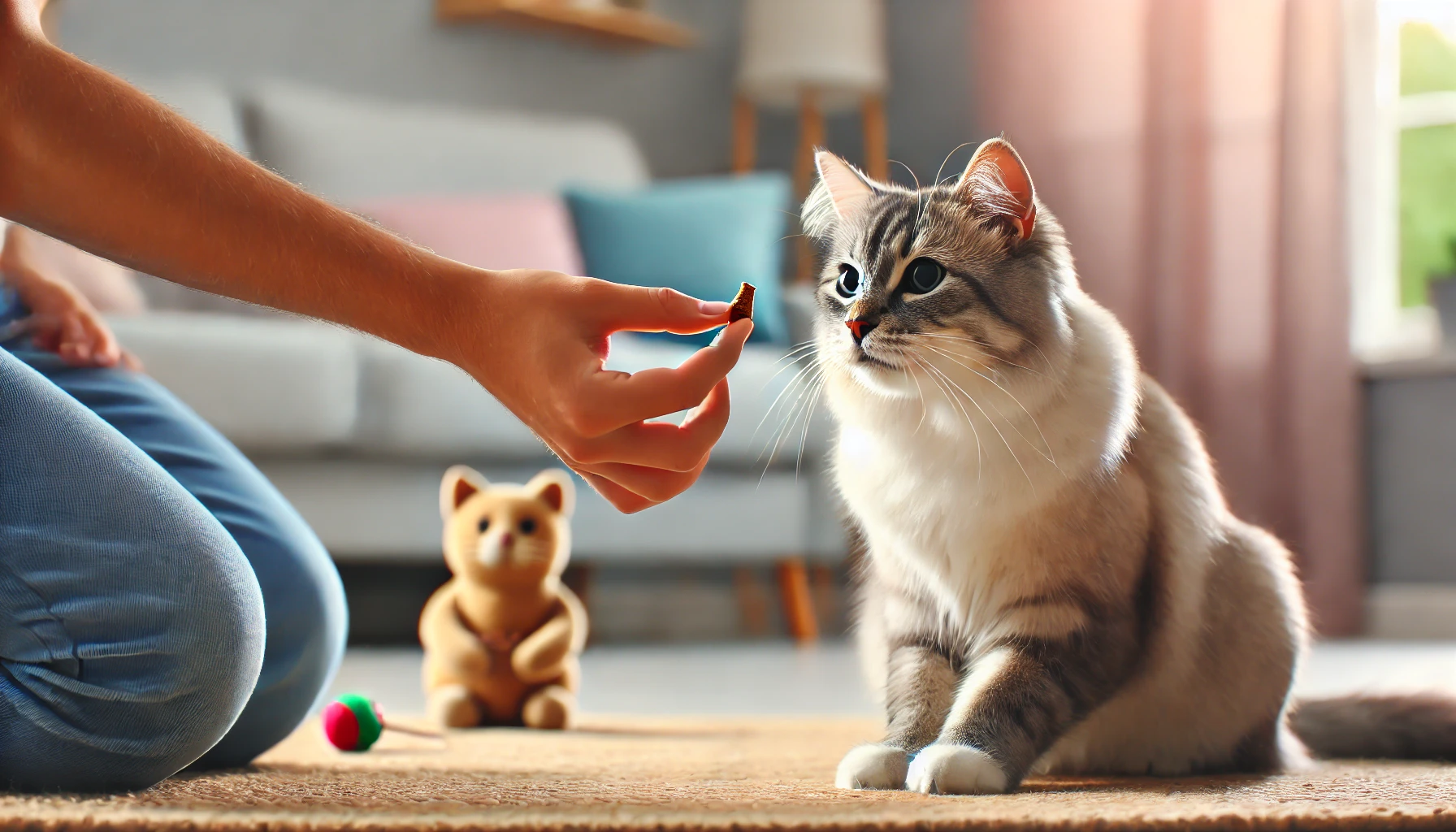
Positive Reinforcement Training for Aggressive Cats
Positive reinforcement is one of the most effective ways to deal with aggression in cats.
The concept is to reward your cat for calm and non-aggressive behavior.
Once rewarded, your cat is more likely to repeat those actions.
When your cat acts aggressively, avoid punishment, as it can increase fear or stress, worsening the situation.
Instead, reinforce calm behavior or avoidance of aggressive triggers with treats, affection, or playtime.
This approach not only improves your cat’s behavior but also strengthens the bond between you and your pet.

Behavioral Modification Strategies
Behavioral modification strategies can also help manage feline aggression.
The goal is to gradually desensitize your cat to the stimuli that trigger aggression.
For example, if your cat reacts aggressively when guests visit, you can slowly introduce your cat to these situations by keeping them at a distance initially, then gradually reducing the distance over time.
Offering rewards and keeping interactions calm will help your cat feel more comfortable in previously stressful situations.
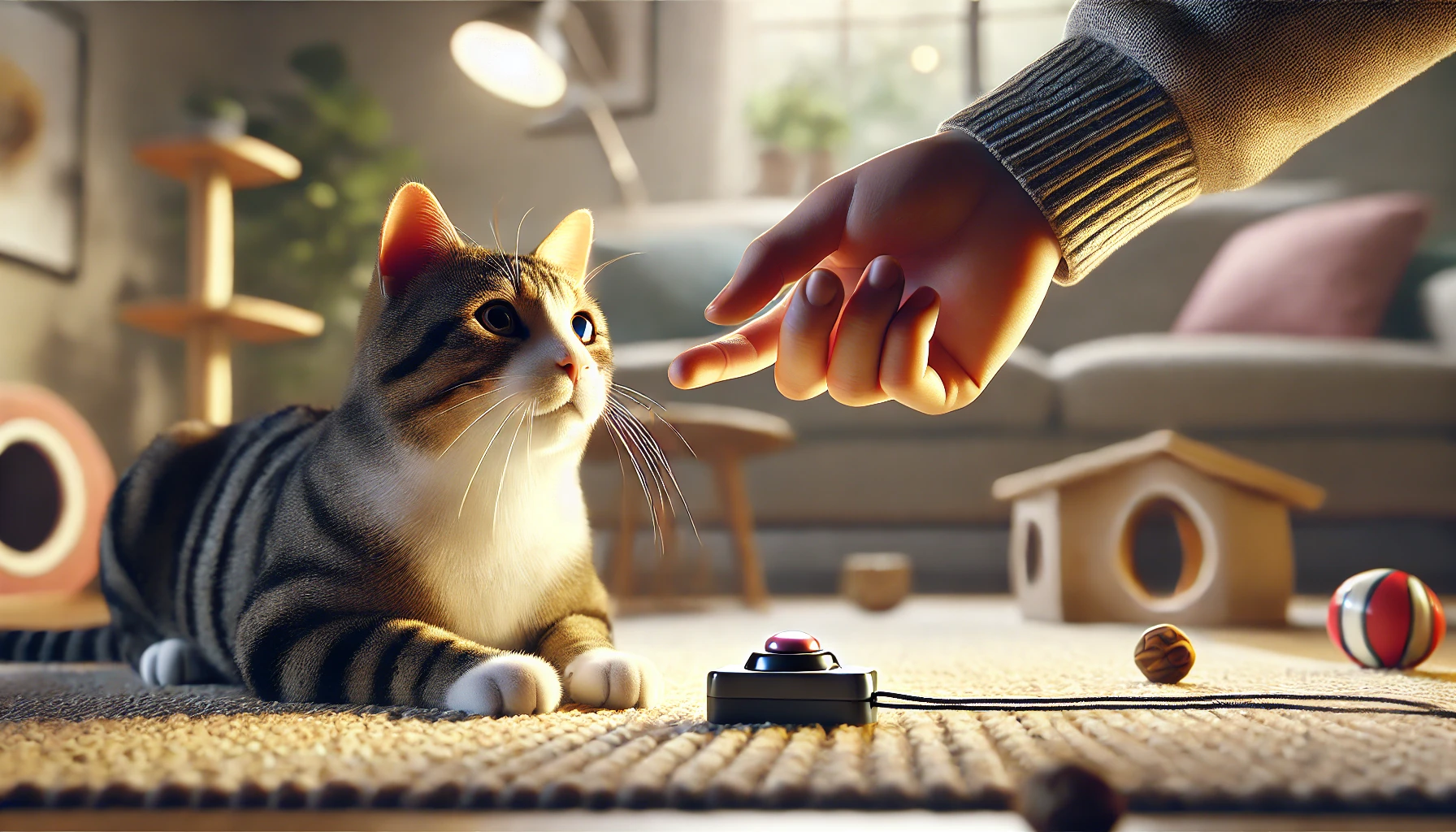
Clicker Training for Reducing Aggression
Clicker training, commonly used with dogs, can be just as effective for cats.
The sound of the clicker, paired with positive reinforcement like a treat, signals to your cat that they have performed a desirable behavior.
This technique can be used to reinforce calmness or divert your cat’s attention from aggressive behaviors.
Over time, your cat will associate the clicker with positive experiences and be more likely to respond calmly in stressful situations.
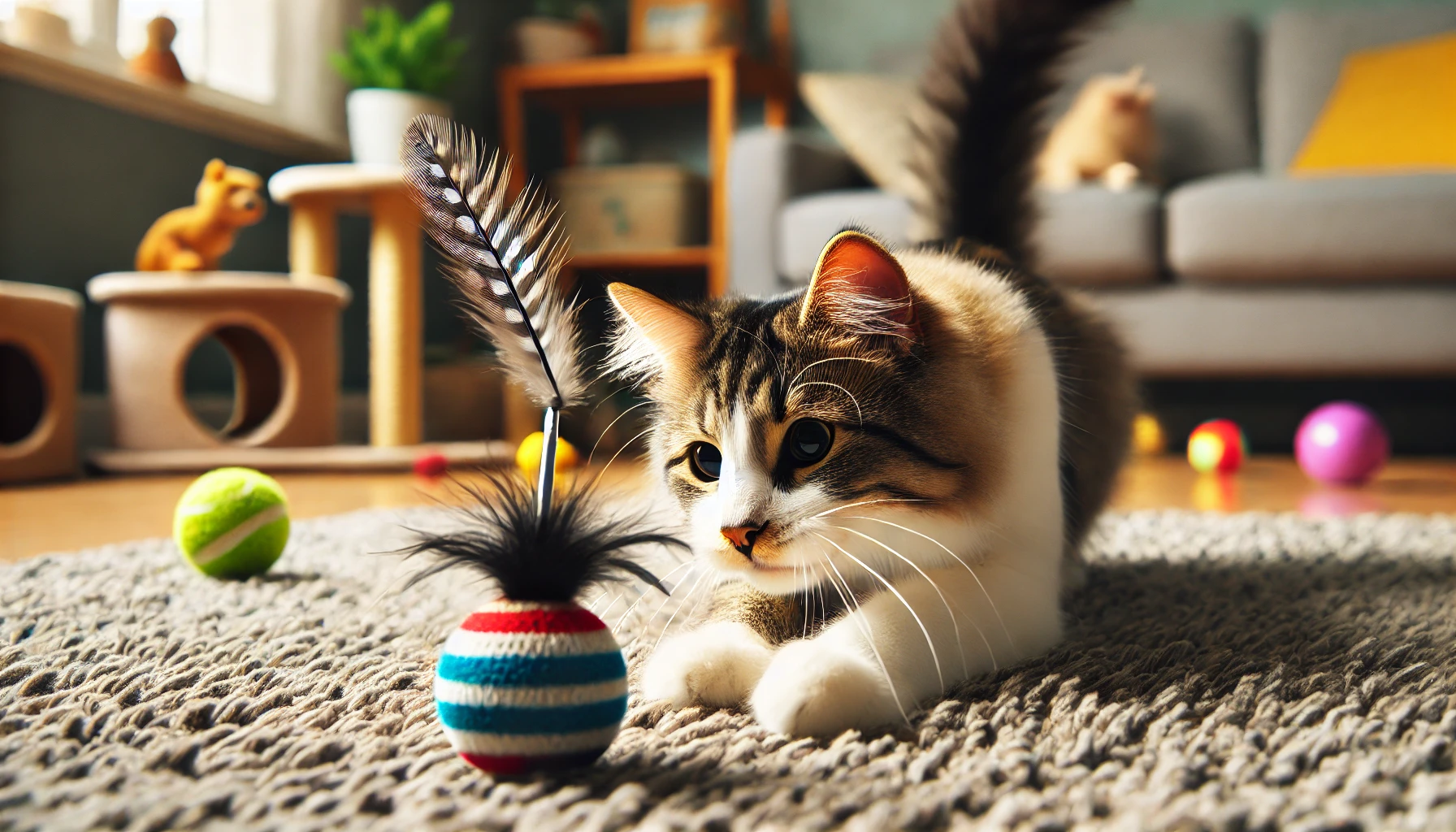
Play and Diversion to Handle Aggression
Diverting your cat’s attention is another effective method for handling aggression.
Using toys, interactive play sessions, and providing environmental enrichment can reduce frustration and boredom, both of which are often linked to aggression.
By giving your cat ample opportunities for healthy stimulation, you reduce the likelihood of them resorting to aggressive behavior due to frustration.
By consistently applying these training techniques, you can minimize your cat’s aggressive tendencies and create a more harmonious living environment for both you and your feline friend.
Training techniques such as positive reinforcement and behavioral modification can significantly reduce aggressive tendencies over time.
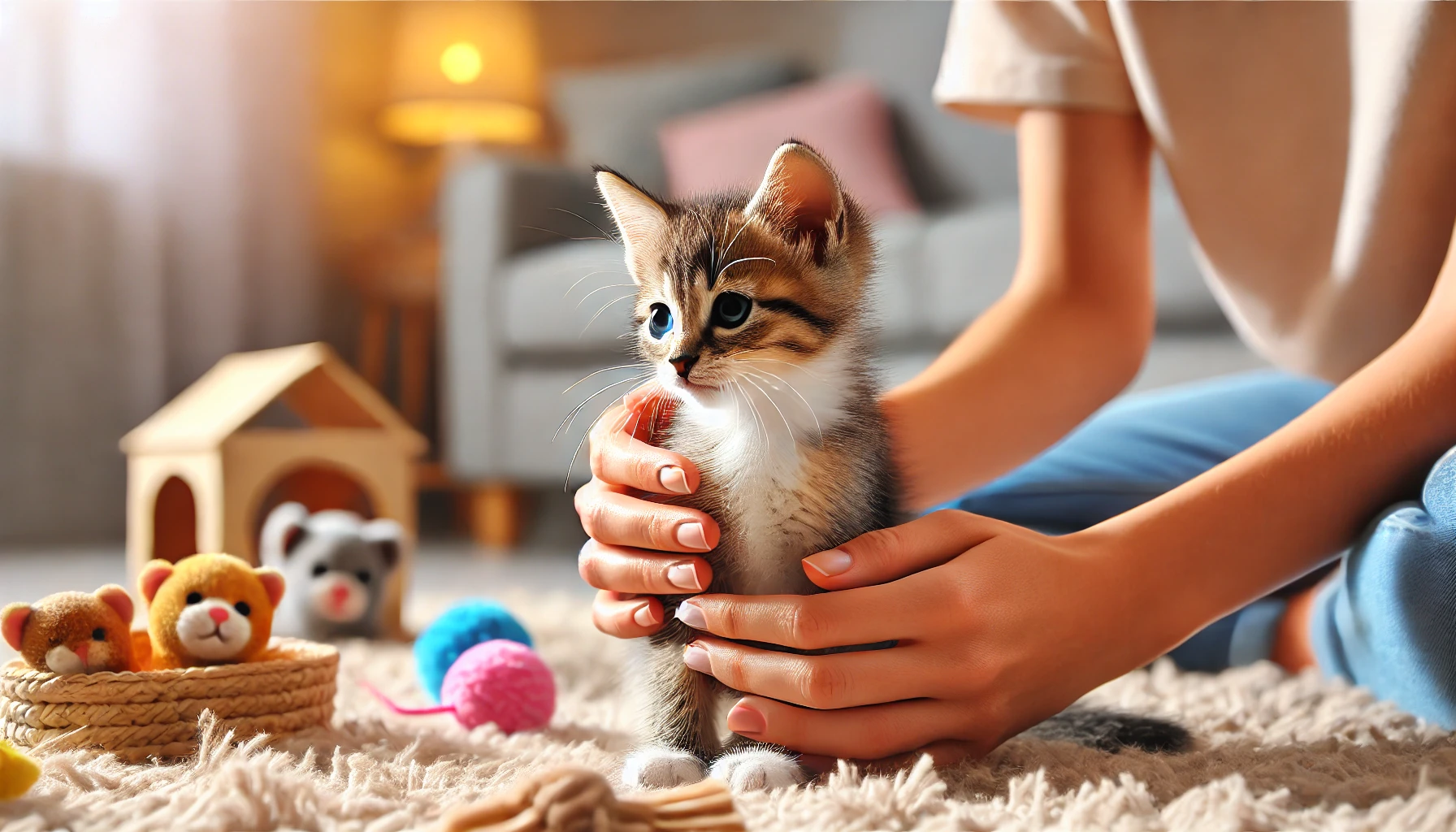
Preventing Cat Aggression: Early Socialization
Perhaps the best way to minimize aggression in cats is through early socialization.
Just like children, kittens learn a lot from the life around them during their first few months.
Properly exposing your cat to various people, pets, and situations during their formative months can set a positive foundation and reduce aggression later in life.
Early socialization helps your cat cope with new and different stimuli, which is key to preventing cat aggression as they grow older.

Kitten Socialization
Socializing a kitten between two to fourteen weeks is crucial to their development.
During this stage, kittens are most receptive to learning and easily adapt to their surroundings.
Early exposure to different people, animals, and sounds will help build your kitten’s confidence and minimize fear-related aggression later in life.
The key steps in socializing your kitten include:
- Exposure to new people: Let your kitten interact with a variety of people to build confidence and familiarity with humans.
- Introduction of other animals: Gradually introduce your kitten to other pets so they can become acquainted with each other in a non-threatening way.
- Handling and touch: Regularly handle your kitten gently to get them accustomed to human touch, reducing defensiveness when they are touched in the future.
- Noise desensitization: Gradually expose your kitten to household noises, such as vacuums or loud appliances, to help them get used to different types of sounds.
These early interactions help your kitten feel more at ease in their environment, reducing the chances of aggression as they grow.

Socializing Cats with New Environments and People
When introducing your cat to new environments, take things slowly and allow your cat to explore at their own pace.
Sudden changes can cause stress and, in turn, aggression.
If you are moving to a new home or bringing your cat to a new place, give them a dedicated room with familiar items like their bed, toys, and litter box.
As they become more comfortable, you can gradually expand their access to the rest of the house.
Similarly, when introducing your cat to new people, ensure the interactions are calm and gentle.
Encourage guests to allow the cat to approach them instead of forcing interaction.
This helps your cat feel in control, reducing anxiety and fear-based aggression.

How Early Socialization Affects Long-Term Behavior
The socialization your cat experiences as a kitten can greatly influence their behavior throughout their life.
Well-socialized cats tend to be friendly, confident, and adaptable.
They are less likely to display fear-based aggression, which means they can handle various situations more easily, such as vet visits or meeting strangers.
On the other hand, poorly socialized cats are more likely to react with fear or aggression when faced with new experiences.
Early socialization not only minimizes aggression but also helps your cat become a happier, more well-adjusted companion.

Aggression Prevention Between Cats
If you have more than one cat or are introducing a new cat into your home, preventing aggression between them is important.
Cats are territorial by nature, so a careful introduction is necessary to avoid stress and aggression.
Here are some steps to follow when introducing new cats:
- Slow introduction: Keep the new cat in a separate room at first, allowing both cats to get used to each other’s scent before meeting face-to-face.
- Supervised interactions: Once they are familiar with each other’s presence, set up short, supervised meetings to monitor their behavior.
- Separate resources: Provide separate food and water bowls, litter boxes, and beds to reduce competition and territorial disputes.
- Reward calm behavior: Use positive reinforcement to reward both cats for calm, non-aggressive behavior during introductions.
By following these steps, you can reduce aggression between cats and create a peaceful multi-cat household.
Socializing your kitten early on is one of the most effective ways to prevent aggressive behavior as they grow older.

Managing Different Forms of Feline Aggression
Aggression in cats can take many forms, and the underlying causes may also differ.
It is essential to understand the exact type of aggression your cat displays to address and manage it effectively.
Whether territorial, fear-induced, play aggression, or redirected, each type requires a specific approach to ensure a peaceful home environment.
Let’s explore the most common types of cat aggression and how you can manage them.

Managing Conflicts in Space: Territorial Aggression
Territorial aggression is a common issue, especially in multi-cat households or when new pets are introduced.
Cats are instinctively territorial and may feel the need to protect their space from perceived intruders.
This aggression can manifest as hissing, swatting, or even full-blown attacks.
To manage territorial aggression:
- Slow introductions: If introducing a new pet, keep it in a separate room for the first few days. This allows your current cat to become accustomed to the new pet’s scent before encountering them face-to-face.
- Plenty of resources: Provide each cat with separate food and water bowls, litter boxes, and resting spots to reduce competition and territorial disputes.
- Pheromone diffusers: Products like Feliway can help reduce stress and create a calmer environment for territorial cats.

Aggression Induced by Fear: Gaining Your Cat’s Trust
Fear-induced aggression occurs when a cat feels threatened or scared.
This type of aggression often happens during vet visits or when encountering new people or animals.
Fear-based aggression can cause cats to lower their heads, arch their backs, flatten their ears, or hide before attacking.
To reduce fear-induced aggression:
- Create a comfort zone: Provide a safe retreat for your cat, such as a quiet room with familiar bedding and toys, where they can go when feeling scared.
- Practice gradual desensitization: Slowly expose your cat to the things they fear, such as new people or objects, while rewarding calm behavior with treats and affection.
- Be calm and patient: Never force interaction on a fearful cat. Give them time to settle and approach them in a calm and non-threatening manner.

Play Aggression: Setting Limits
Play aggression is common in younger cats and kittens.
It may involve biting, scratching, or pouncing during playtime.
While it may seem harmless, if left unchecked, it can become problematic.
Play aggression is often caused by overstimulation or a lack of boundaries during kittenhood.
To manage play aggression:
- Redirect energy: Use toys like feather wands or laser pointers to engage your cat in play without biting or scratching you.
- Avoid hands: Never use your hands or feet as toys, as this encourages your cat to see them as objects to bite or scratch.
- Stop play when needed: If your cat becomes too aggressive during play, immediately stop the session. This teaches them that rough behavior ends playtime.

Redirected Aggression: Avoiding Sudden Attacks
Redirected aggression occurs when a cat is frustrated by something they cannot access, such as another cat seen through a window.
The frustration may lead the cat to attack nearby people or pets.
Redirected aggression can be sudden and intense.
To prevent redirected aggression:
- Block visual triggers: If your cat is agitated by seeing other animals outside, close the blinds or curtains to block their view.
- Distract your cat: Use toys or treats to divert your cat’s attention when they show signs of agitation.
- Allow cool-down time: If your cat becomes overly aggressive, give them space to calm down in a quiet room before interacting with them again.
By understanding and addressing these specific types of aggression, you can create a more serene and safe environment for both you and your cat.
Each type of feline aggression, such as territorial or fear-induced, requires its own specific management techniques to ensure a peaceful environment.

When Is It Time to Call a Professional for Aggressive Cats?
Many cases of cat aggression can be moderated through training and behavioral changes, but sometimes, professional intervention is necessary.
If your cat remains persistently aggressive or the condition worsens despite your efforts, it may be time to seek help from a veterinarian or a certified animal behaviorist.
Aggression in cats may sometimes indicate an underlying health condition or deeply rooted behavioral issues that only professionals can properly address.
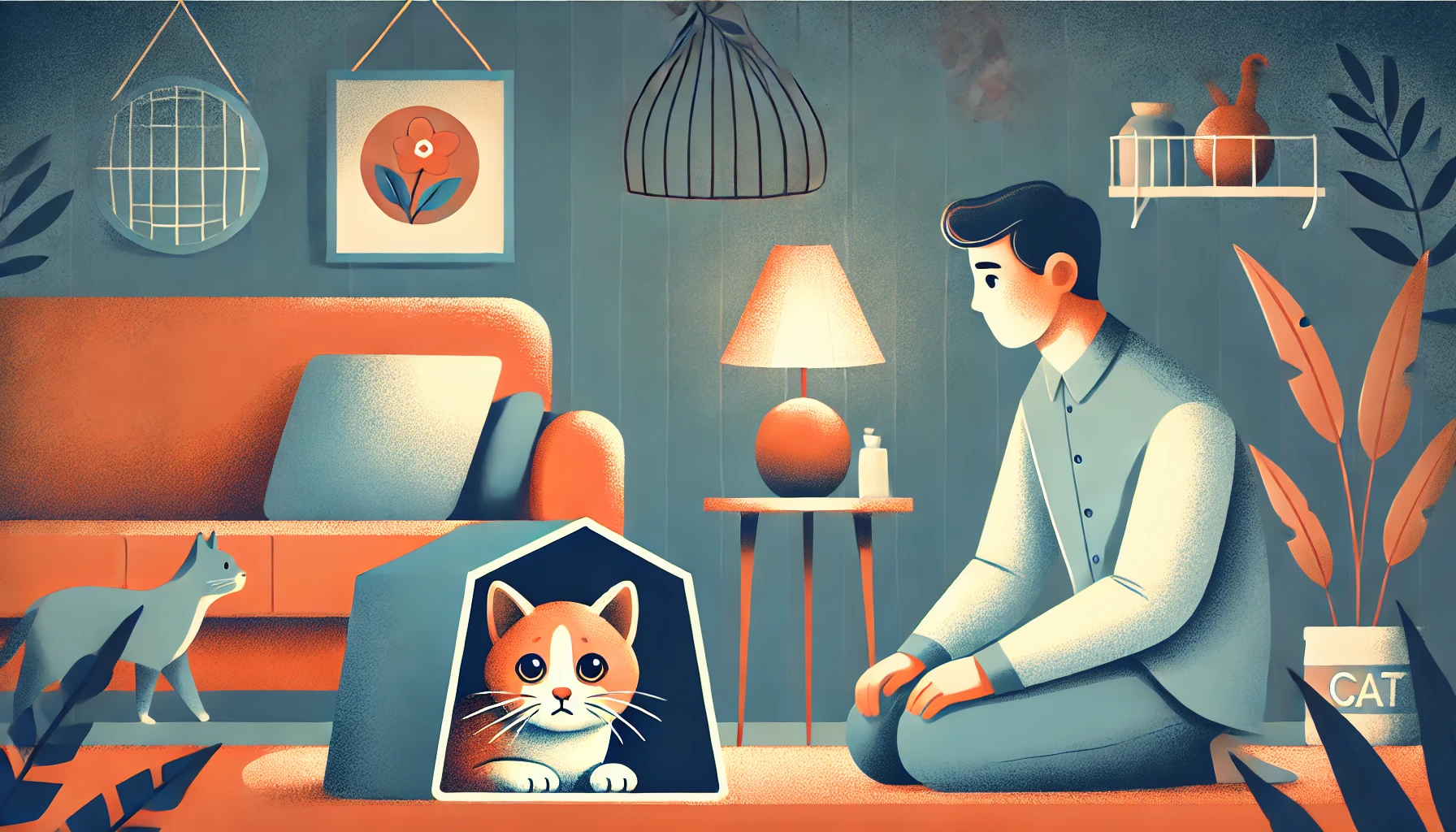
Signs It’s Time to Consult a Veterinarian
If your cat’s aggression appears sudden or out of character, it could be due to a medical issue.
Cats in pain or discomfort may act aggressively to protect themselves.
Some signs that a vet visit is warranted include:
- Sudden changes in behavior: If your cat was previously calm and has become aggressive without any apparent trigger, it’s important to rule out medical issues.
- Visible signs of pain: Limping, excessive grooming, or vocalizing when touched may indicate your cat is in pain.
- Changes in appetite or litter box habits: A sudden lack of interest in food or difficulty using the litter box may signal a health issue contributing to the aggressive behavior.

Understanding the Animal Behaviorist’s Role
If a veterinarian rules out medical causes for the aggression, an animal behaviorist can help address the behavioral side of the issue.
Animal behaviorists specialize in understanding why aggression occurs and can create a behavior modification plan tailored to your cat.
Consulting an animal behaviorist is particularly helpful in complex cases involving fear-based or territorial aggression.
Benefits of working with an animal behaviorist include:
- Detailed analysis: Behaviorists can observe your cat’s interactions with their environment to accurately determine what triggers the aggression.
- Personalized behavior programs: They can create a gradual behavior modification program to address specific problems your cat is experiencing.
- Follow-up support: A behaviorist can provide guidance on how to implement the training process and adjust the behavior plan if needed.

Medications and Therapies for Aggression
In some cases, medication may be necessary, especially if the aggression is due to anxiety, fear, or a medical condition.
Your veterinarian may prescribe medications to reduce your cat’s stress levels and improve their behavior.
However, medications are typically used in conjunction with behavior modification techniques, not as a standalone solution.
Therapies that may be recommended alongside medication include:
- Desensitization and counterconditioning: Gradually exposing your cat to a feared stimulus while associating the experience with positive events like receiving treats.
- Pheromone therapy: Synthetic pheromones, such as Feliway, can help reduce stress and make your cat feel more comfortable.
- Environmental enrichment: Providing more opportunities for play, mental stimulation, and physical exercise to reduce frustration and boredom.

Creating a Safe Environment for You and Your Cat
While seeking professional help is essential in severe cases of aggression, it’s also important to create a safe, stress-free environment for both you and your cat during the process.
Here are some strategies to ensure safety:
- Safe spaces: Provide your cat with quiet places to retreat to when they feel overstimulated or anxious.
- Separate aggressive cats: If you have multiple cats, consider separating them during mealtimes or when tensions rise to prevent fights.
- Observe interactions: Monitor your cat’s interactions with other pets and people, especially if they have a history of aggression.
Persistent or worsening aggression despite training efforts may require professional intervention from a vet or animal behaviorist.
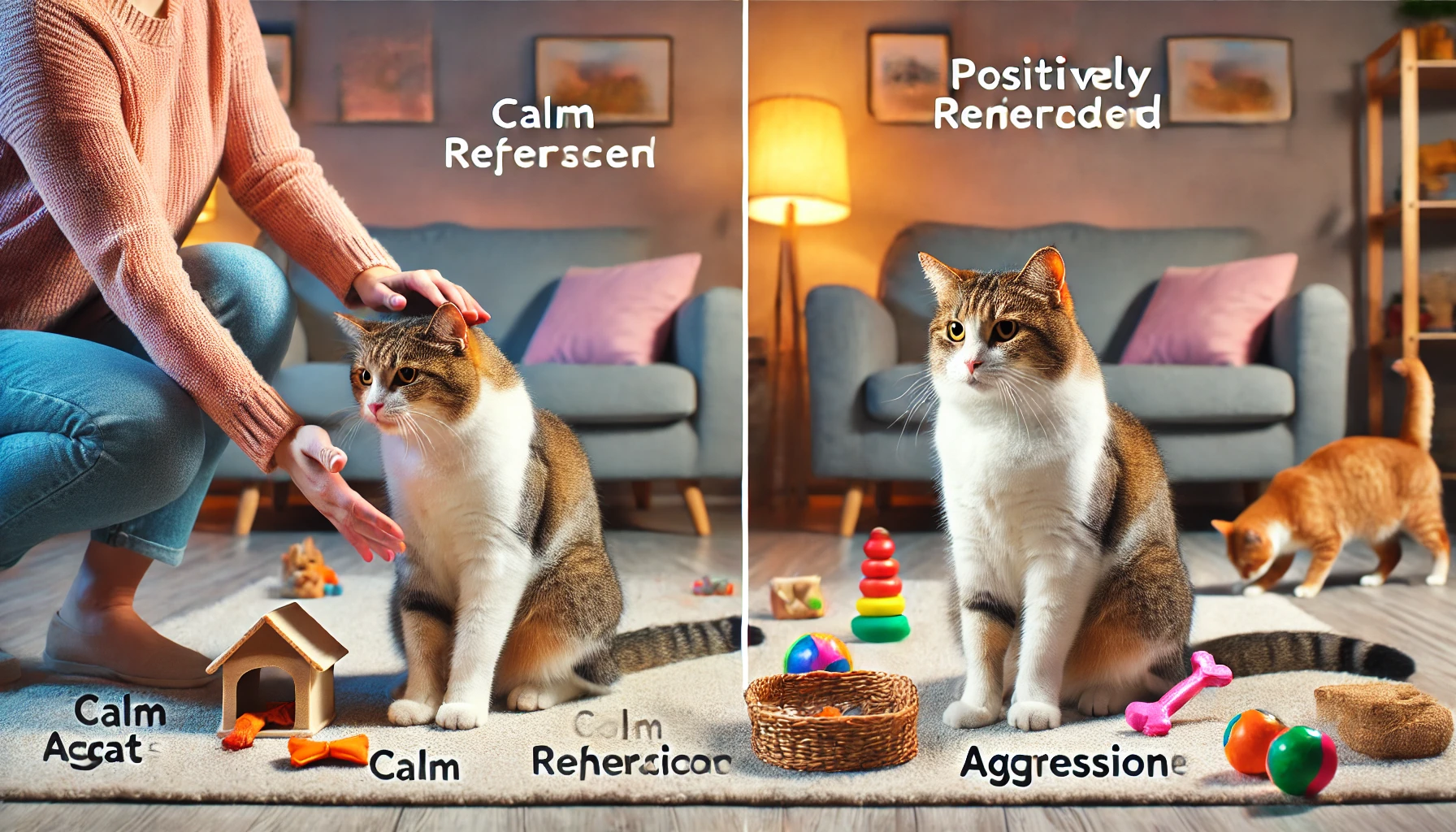
Overview: Understanding and Training Cat Aggression
Cat aggression can be quite complicated and tricky for any pet owner to handle.
However, with the right understanding and approach, it’s an issue that can be brought under control.
Throughout this article, we have discussed the various types of cat aggression, their triggers, and the kinds of training you can implement to address such behavior.
By identifying what’s motivating the feline to become aggressive—whether it’s fear, territorial instincts, or improper socialization—you can tailor your training to foster peaceful coexistence between you and your cat.
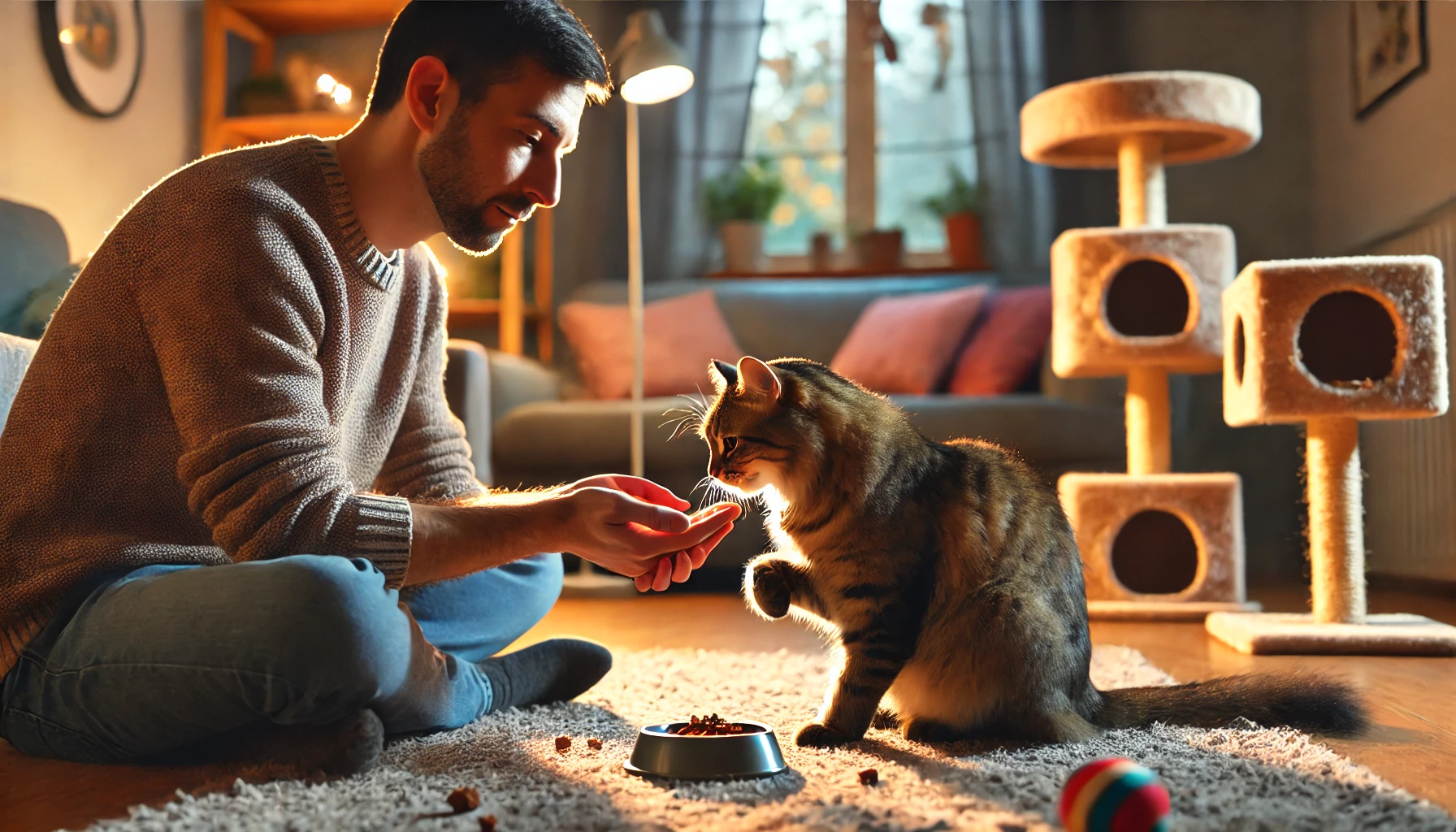
Key Points in Managing Cat Aggression
Here are some key things to keep in mind when attempting to manage aggression in cats:
- Early Socialization: Socializing your kitten to new people, other animals, and different environments when they are young can significantly help prevent aggression later in life.
- Use Positive Reinforcement: Rewarding calm behavior and avoiding punishment helps reinforce good actions, builds trust, and reduces aggressive tendencies.
- Address Specific Types of Aggression: Whether your cat’s aggression is territorial, fear-induced, or play-related, each type requires a customized approach to ensure proper behavior management.
- Seek Professional Help if Needed: If your cat’s aggression persists or worsens, consult a veterinarian or animal behaviorist to rule out medical issues or deep-seated behavioral problems.
- Provide a Stress-Free Environment: Safe spaces, environmental enrichment with toys, mentally stimulating activities, and pheromone therapy can all help reduce aggression in cats.

The Importance of Consistent Training and Professional Support
Consistent training plays a crucial role in managing cat aggression.
Regular training with positive reinforcement, clicker training, and desensitization can help reshape your cat’s behavior over time.
In some cases, professional help may be required.
While a veterinarian can rule out medical reasons for aggression, an animal behaviorist can develop a customized program to address complex behavioral challenges.
Combining professional support with your commitment to understanding and addressing the specific triggers of your cat’s aggression will help ensure that your home remains a safe and harmonious environment.
With time, patience, and the right strategies, you can manage your cat’s aggression and strengthen your relationship with your feline friend.

Closing Remarks on Approaching Aggression in Cats
Dealing with cat aggression can sometimes feel overwhelming, but applying the knowledge and techniques discussed in this article will help improve your cat’s behavior and create a more peaceful atmosphere at home.
Whether it’s early socialization, specific training methods, or seeking professional help, you can handle cat aggression with compassion and effectiveness.
Keep in mind that patience and persistence are key—your efforts will be rewarded in time with a happier, more confident cat.
Consistent training and proper handling of your cat’s aggression can lead to a more harmonious relationship between you and your pet.
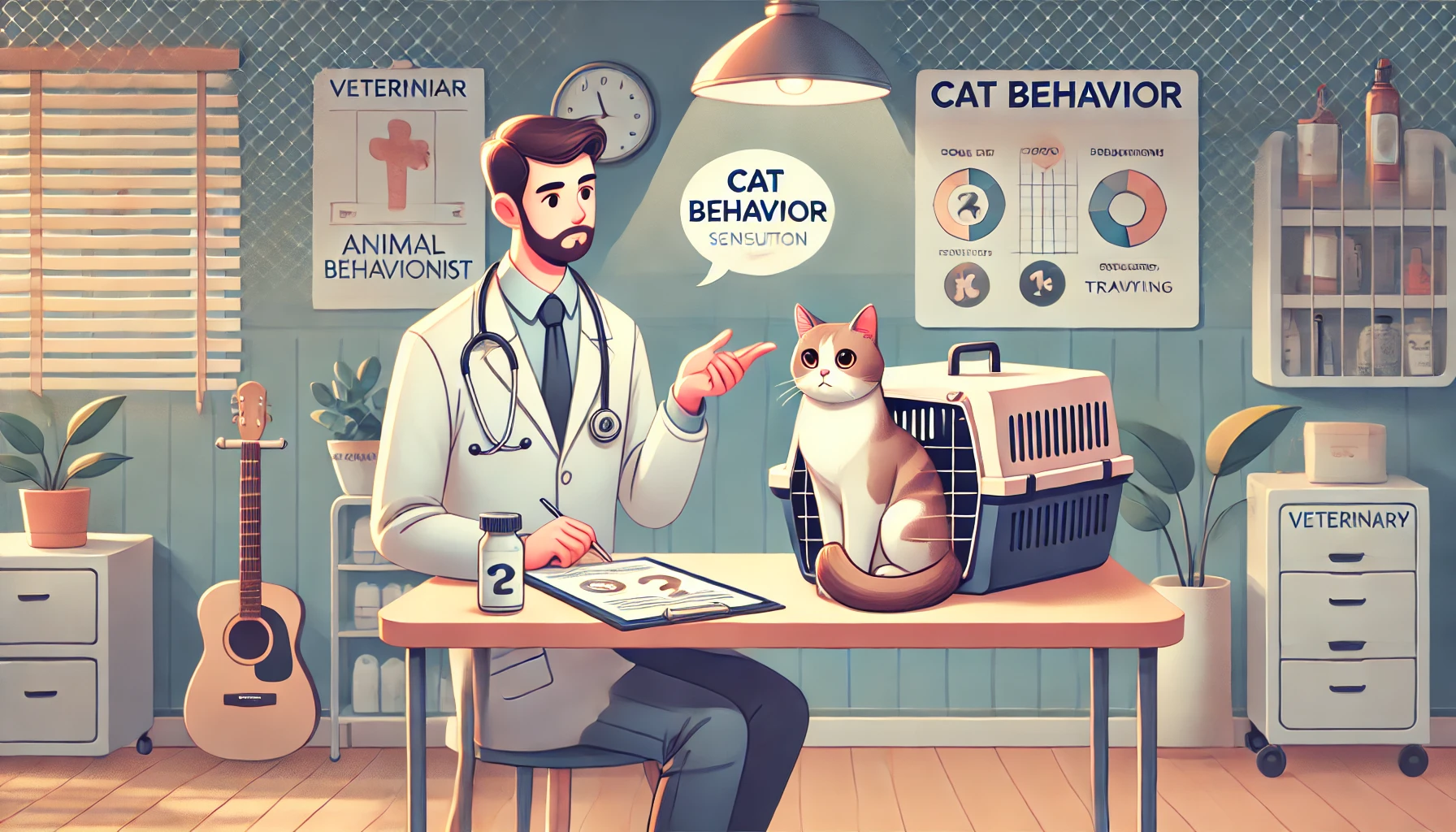
Frequently Asked Questions About Cat Aggression and Training
Here are some of the most common questions regarding cat aggression and how to manage it through proper training techniques.
What causes aggression in cats?
Aggression in cats may be caused by many factors, including fear, territorial instincts, lack of proper socialization, or medical issues.
Identifying the cause is crucial to managing and addressing the aggressive behavior effectively.
How can I tell if my cat's aggression is fear-based?
Fear-based aggression often involves defensive behaviors such as hissing, flattening ears, arched backs, and attempts to hide.
It typically occurs during vet visits or when your cat encounters new people or animals, as they feel threatened.
What's the best way to introduce a new cat to avoid aggression?
Start by keeping the new cat in a separate room, allowing both cats to get used to each other’s scent.
Gradually introduce them under supervision, rewarding calm behavior to prevent territorial aggression.
Can an adult cat be trained to be less aggressive?
Yes, adult cats can be trained to reduce aggression.
With consistent use of positive reinforcement, behavioral modification, and desensitization, you can reshape your cat’s behavior, although it may require more time and patience.
Should I punish my cat for aggressive behavior?
No, punishing your cat for aggressive behavior can increase their stress and worsen the aggression.
Instead, focus on rewarding calm behavior, avoiding triggers, and using positive reinforcement to encourage better actions.
How can I prevent play aggression in cats?
Avoid using your hands or feet as toys to prevent play aggression.
Provide interactive toys, such as feather wands or laser pointers, to redirect your cat’s energy and set boundaries during playtime.
When should I seek professional help for my cat's aggression?
If your cat’s aggressive behavior worsens or persists despite following these steps, or if the aggression seems out of character, consult a veterinarian or an animal behaviorist for further evaluation and support.




